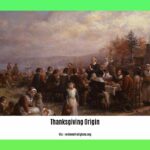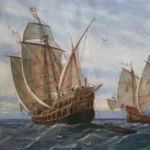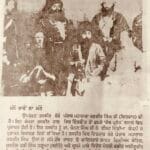Imagine a ship navigating the vast Atlantic, carrying courageous souls seeking a new life. Their names and stories are forever etched in the Mayflower ship manifest—a historical treasure map guiding us through their incredible journey. Let’s embark on this voyage of discovery, encountering the Pilgrims, understanding their aspirations, and uncovering the trials they faced in building a new home in America.
Setting Sail: A Window into the Past
The Mayflower ship manifest—the very name evokes images of bravery and adventure. But it’s more than just a centuries-old roster. This document, originally compiled by Governor William Bradford, himself a passenger, acts as a portal to the past, connecting us with the individuals who first stepped foot on Plymouth Rock, forever shaping the course of history.
Imagine a 17th-century passenger log. This time capsule preserves the stories of over 100 individuals who boarded the Mayflower, seeking religious freedom and new beginnings. The manifest introduces us to the Leiden Congregation, driven by their faith to risk everything for a chance to worship freely. We also encounter the Merchant Adventurers, enticed by the promise of opportunity and a chance to build a brighter future.
Reading through the manifest, we encounter individuals like William Brewster, a spiritual leader who steered his people through unimaginable hardships. We meet John Howland, a young man who miraculously survived a fall overboard—a tale ripe for sharing! And then there’s Myles Standish, the ship’s military protector, entrusted with their safety in this unfamiliar territory.
Life onboard was far from luxurious. Picture a crowded vessel, tossed by relentless waves, with limited provisions, and the looming threat of disease. Their resilience was tested, yet amidst the challenges, these passengers found strength in their shared dreams, forging a community destined for the history books.
The Mayflower ship manifest stands as a testament to the human spirit—a reminder that the pursuit of liberty and a better life is woven into the very fabric of America. For genealogy enthusiasts, it’s a goldmine. The manifest serves as a map, allowing them to trace their lineage back to the courageous individuals who took that daring leap of faith.
Yet, the Mayflower’s narrative continues to unfold. Researchers, like detectives piecing together clues, utilize diaries, ship logs, and even archaeological findings to paint a more comprehensive picture of life aboard. What fascinating mysteries are still waiting to be unearthed?
How Exceptional is a Mayflower Descendant?
The Mayflower and its passengers hold a unique place in history, but just how special is it to be a Mayflower descendant? While millions today might have a Mayflower ancestor somewhere in their family tree, it’s a bit more intricate than it seems.
Consider the harsh reality of that first winter in Plymouth. The brutal conditions claimed the lives of nearly half the Mayflower passengers. It’s these resilient survivors who are the direct ancestors of every Mayflower descendant alive today. When you compare that small group to the millions descended from them, the rapid expansion of the family tree becomes apparent.
Over four centuries, families evolve. Mayflower descendants didn’t marry exclusively within their own families, leading to a blending of lineages. Each generation added more branches, making the Mayflower connection a smaller piece of each individual’s heritage.
Furthermore, verifying a Mayflower connection can be difficult. Record-keeping in the 17th century was unreliable. Information about births, marriages, and deaths was often lost or never recorded. Tracing female lines adds another layer of complexity. Historically, women often adopted their husband’s last name upon marriage, making it challenging to track their lineage.
Therefore, while having a Mayflower ancestor isn’t as rare as one might assume, directly tracing your lineage back to those specific individuals is a remarkable feat, akin to finding a hidden treasure. It requires meticulous research and a bit of luck!
The Mayflower’s Toll: How Many Survived?
The Mayflower’s maiden voyage was fraught with hardship. Of the 102 souls who embarked on the journey, only around half, approximately 53, endured the harsh conditions of that first winter in the New World. This stark reality underscores the immense challenges they encountered: unfamiliar food, frigid temperatures, and diseases they had never encountered before. Many, particularly women and children, succumbed to these hardships.
However, those who survived became the foundation of Plymouth Colony. Their strength and resilience laid the groundwork for a new chapter in history—one that continues to resonate today.
Unraveling the Mayflower Passenger Manifest
In 1620, 102 passengers, each with their own motivations and stories, boarded the Mayflower, embarking on a journey that would reshape the world.
The passengers primarily consisted of two groups. The Leiden Congregation, comprising around 37 individuals, sought religious freedom after facing persecution in England. They envisioned building a new society in America where they could practice their faith without fear.
Then there were the Merchant Adventurers, essentially the investors of the time, who saw the New World as a land of opportunity. They dreamed of establishing trading posts, capitalizing on the untapped resources and potential riches.
This diverse group—families confined to cramped cabins, single men seeking new beginnings, and indentured servants yearning for freedom—shared a collective dream of a new life.
Life aboard the Mayflower was a test of endurance. Imagine the discomfort of seasickness, the terror of storms, and the lack of basic hygiene after weeks at sea. Yet, amidst the hardship, they forged a sense of community. The Mayflower Compact, drafted and signed by the men on board, established a framework for self-governance in the New World—a revolutionary concept for its time.
Tragically, the journey was not without loss. Some passengers succumbed to the harsh conditions, their dreams cut short. However, there were also moments of hope, like the birth of Oceanus Hopkins amidst the rolling waves, symbolizing new beginnings.
Thankfully, Governor William Bradford meticulously documented the names, ages, and origins of the passengers. This list offers a poignant glimpse into the lives of these ordinary people who embarked on an extraordinary adventure. For millions of Americans today, this list is more than just history—it’s a personal connection to their heritage, a link to the very foundation of a nation.
Unveiling the Mayflower Passenger Manifest: A Journey Through Time
Is there a list of the people who embarked on the Mayflower in 1620? Absolutely, and it’s more than just names on a page. This document, penned by Governor William Bradford himself, allows us to step back in time and meet the individuals who dared to cross the Atlantic in search of a new life.
A Window to the Past
The Mayflower Passenger Manifest, a treasure trove of history, reveals the names of the 102 individuals who braved the perilous voyage in 1620. It’s a testament to Governor Bradford’s meticulous record-keeping, offering us an invaluable window into the past.
Unlocking the Stories
This manifest, carefully preserved at the State Library of Massachusetts and accessible online through digital archives, invites us to explore the lives of these intrepid individuals. It details their family units, occupations, and even those who tragically perished during the journey or that first harsh winter.
Highlights of the Manifest
- Confirmation of Passengers: The manifest confirms the presence of 102 passengers on board.
- The Leiden Congregation: It highlights the significant presence of 37 members from the Leiden Congregation, seeking religious freedom.
- Passenger Diversity: The manifest sheds light on the diverse makeup of the passengers, including families, single men seeking opportunity, and indentured servants.
- Clues to Their Lives: By listing occupations, we gain insight into the skills these early colonists brought with them—farmers, carpenters, blacksmiths, and more.
- A Reminder of Hardships: The manifest solemnly notes those who succumbed to the harsh realities of the journey and the first winter, reminding us of the sacrifices made.
A Treasure Trove for Exploration
Today, the Mayflower Passenger Manifest serves as a cornerstone for historians, genealogists, and anyone captivated by the story of America’s beginnings. It’s a reminder that history is more than just dates and events—it’s about the lives and legacies of those who came before us. Who knows what other secrets and stories lie hidden within its pages, waiting to be brought to light?
To unravel the haunting history of antisemitism, delve into the Kristallnacht article. Enhance your understanding of the subject by exploring the insightful Kristallnacht book for a thorough portrayal of this somber event.
- SYBAU See You Baby Meaning: Gen Z Slang Evolves - July 1, 2025
- Unlock Your Inner Youth: Lifestyle Secrets for a Vibrant Life - July 1, 2025
- Decode SYBAU Meaning: Gen Z Slang Explained - July 1, 2025






